By Tim O'NeillThe spring Shad run can be one of the most prolific fisheries of the spring, it can also be one of the most overlooked. Starting at around mid-April our rivers and tributaries will fill with these migrating fish as they start their yearly pilgrimage to span and repeat the circle of life. A quick circle it is as the entire spawn lasts around 6 weeks. If it is past the third week of May and I have 2 subpar outings, a sub-par outing is less than 30 fish, it is time to move on to Smallmouth. What is a good outing you may ask… on a year with a strong migration, when targeting hickories, triple digit catch numbers is the goal, and an attainable goal it is. There are over 30 different species of Shad, all members of the Herring family. The two most popular and the ones we target with fly gear are the American and the Hickory Shad. The crown jewel of the Shad family is the American Shad. These fish start their migration a little later in the year, they are usually in my home waters of Northern Delaware around Mother’s Day. A 4-to-6-pound average fish with a deep forked tail and shaped like a bullet, these fish will give a stout 8 weight a solid workout. The smaller cousin to the American is the Hickory shad. At a 1-to-3-pound average, what they lack in size they make up for in numbers and tenacity, they aren’t nicknamed “Poor man’s Tarpon for nothing”. At the time of hook expect to feel several violent head shakes followed by the ole’ “airborne ranger” as these fish usually come out of the water at least one time during the time you are trying to land them. The gear we use to chase these fish is pretty simple as are the techniques we use to catch them. We mentioned Smallmouth earlier, with the exception of flies, all the gear you use for Smallmouth will fit into the Shad fishing arenas quite nicely. For Hickories 5 to 7 weight single handed rods are ideal. Early in the season we may be dealing with high, fast moving water. Weighted flies and heavy sink tips could be the norm. Do your shoulder a favor and take a 7 (or possibly an 8 weight) when hucking the “chuck and duck” rig. Later in the season, when the water flows are considerably lower a 5 weight with an intermediate sink tip is ideal. In 20 years of chasing both Americans and Hickories I don’t believe I have ever used a floating line and I am not sure I have a need for one. Beings we are typically using a form of a sinking line leader construction is pretty simple. I will typically build a short, 3-to-4-foot, leader out of Fluorocarbon consisting of two feet of 12 to 15# blood knotted to a 1.5-to-2-foot piece of 1 or 2X. If you enjoy throwing 2 handed rods these new Micro Spey rods were tailor made for these fish, especially the smaller Hickories. Smaller two handers in the 3 to 5 weight range are a joy to cast all day (you do A LOT of casting during a day of Shad fishing) and the smaller, Micro Spey’s let you “feel” the fish very well. Fishing techniques are very simple, typically we will implore the wet fly swing. Position yourself up river of a spot of deeper holding water, cast down and across river, put a large upstream mend into the cast and let the flies settle in and hunt. Keep the line tight and follow the rig with the rod tip as it swings through the run. Don’t forget the dangle. At the end of the swing let the fly hang in the current for a bit. You will be surprised when a Shad comes up, whacks the fly and almost takes the rod out of your hands! Remember, these are migrating fish, you want to find your spot, stake your claim and stay there as long as you can. If the fishing slows a bit just be patient, the pod you were fishing over has probably moved up river above you. Rest assured, there will be another pod coming along shortly. Also, don’t be afraid to change fly colors. Even if it is the same pattern in a different color, sometimes a color can go “stale” and the fish will stop engaging it. A quick fly change and you are right back in the game catching again. Speaking of flies…just like everything with Shad fishing Shad flies are pretty simple. Small Buggers say size 8 in bright colors are fantastic choices. Hair wing bucktails are another great choice, the tried-and-true Mickey Finn could possibly be the perfect shad fly. Small Clouser Minnows have brought plenty of shad to hand. Having been a Shad a holic for many years you can bet we have designed some of our own patterns. O’Neill’s Shad Crack is our number one pattern. You can see this fly being tied on this month’s beginner fly tying video series. Other favorites we will be showing are O’Neill’s Hazardous waste, and O’Neill’s Dart. Black will sometimes be a good producer, other productive color combos include Chartreuse & Red, White & Pink, Orange & Silver, Yellow and Orange, and my all-time favorite Bubblegum pink & electric blue. Mid-April is a great time to get out and shake off the winter shack nasties. It is also a great time to get your distance cast tuned in after spending an entire winter of flipping a nymph rig up river and watching it float past. I call Shad the perfect fish at the perfect time of year. Hopefully this year you can get out there and chase them with us! Till Next time...
Tight Lines - Tim Every year during the change of the seasons several things happen. Snow melts, Daffodils bloom, trees leaf and the Dogwoods bloom. It seems the blooming of the Dogwoods symbolize many things in the outdoors. Any central Pennsylvania Trout worth his salt will tell you that is the time for the Grannom Caddis. Well, if you are from my area in Northern Delaware the Dogwood bloom means one thing…Shad! Shad are a member of the Herring family and every year around the third week in April they descend on our tributaries in droves. Fresh from the ocean and looking to spawn they are strong, feisty and tailor made to be taken on the fly. The “run” can vary in length (time) and intensity. During strong runs several fish per hour is the norm and a triple digit count on a morning or evening outing is an attainable goal. Yes, it is fair to say I do love the Shad run. Shad fishing is actually pretty simple, a five, six or seven, weight rod, a intermediate or type II sink tip line and a small selection of flies will cover it. We will cast across river, almost at a 90 deg angle, let the fly sink and they twitch it as the current swings the rig down river, below where we are standing. If you choose you can let the fly dangle downstream, if you can wait long enough a fish will come up and take it, I will usually pick it up and re-cast. Flies are fairly simple, anything bright and flashy will do, I do have several of my own designs specifically for Shad, honestly a chartreuse bigger or the venerable ole’ Mickey Finn would fill the bill just fine. Note, to see me tie a few of these patterns visit our new YouTube page by clicking HERE feel free to click subscribe when you are there. For this outing we were fishing some new TFO gear. I had my TFO A2X 9 foot 5 weight. I have been using this rod to throw streamers to Trout on some local rivers, this shad run was the specific reason I got this set up. I was throwing an intermediate shooting head with a short (1.5 foot) T8 sink tip. Tyler was fishing the Drift rod set up as a Micro Spey. Two handed casting with a 2, 3, or four weight Micro Spey set up is fantastic fun on the Shad river. We were into fish form basically the first cast, I don’t know how many we landed, we estimated about 150 between the 2 of us. It was a fantastic day on the water. The Shad run is something special that happens each year. Some better than others, some are epic. One thing is for sure, these fish are a ton of fun!
If you would like to learn more about this great fishery book my "Shad Fishing 101" presentation for your club or private group. It is full o tons of information to chase these strong, hard fighting fish. Till next time... Tight Lines , Tim Tyler and I had the pleasure of fishing with central Pennsylvania's premier Smallmouth guides, Brian Shumaker. Brian is the owner of Susquehanna River Guides and has spent the past 30 years floating the rivers in and around west central PA including the fabled Susquehanna and Juniata rivers. Brian has become a good friend over the years so we jumped at the chance to spend a day on the water with him. We did the 2 hour ride from our place to the meeting spot in record time where we then followed Brian with his Hyde drift boat in tow to the um, well, we will say...boat ramp. We were on a smaller piece of water Brain can only float in his hard hull during the Spring. later in the year there is simply not enough water to get down this particular river. Getting the boat in the water was interesting, but we got it down the bank and we were soon on our way. Smallmouth are my favorite fish, they are beautiful, hard fighting and are tailor made for fly fishing. We spent the day pounding the banks and back eddies with streamers and slowly stripping them back. "Stripping them back" is really a bit of a misnomer, really we were just letting the flies hang and swing a bit and just keeping the line tight as the boat drifted down river. This is a cool technique as once you "get" it you can literally hold the fly in one spot for an extended amount of time to entice a big ole' bronze back to come up from the deeper water and smash it. We started off a little slow, typical with spring time smallmouth fishing as the water was still a bit on the cool side at 52 degrees. When the sun got up and the water warmed so did the fishing. As soon as he stepped up on to the front casting position Brian was tight to a solid smallmouth. Literally it was on his first or 2nd cast! nThis was not a guided trip, it was what we call a "row and go" meaning three guys are in the boat, 2 guys fishing and 1 rowing the boat. We would switch positions so every got to fish and every one would row. If rowing a drift boat is not something you do every day you will soon appreciate the skill of an accomplished oarsman. It is not as easy as a good rower makes it look...just ask Tyler. I really think you should spend some time on the oars if you can, it will give you a better appreciation of how everyone needs to work together for the boat to be successful. Tyler was picking it up toward the end, I am very excited for our Smith Fly raft to be completed so we can start floating some of our local (and not so local) rivers this summer. On his second stint on the bow Tyler stuck a good fish followed by an even better smallie. Tyler and I were fishing some of TFO's new gear, mainly the Axiom 2 X rods and the new BVK sealed drag reels. As mentioned smallmouth are my favorite fish to fish for, coincidentally we spend a lot of time chasing them each year. For years my go to set up has always been a 7 weight. We throw some pretty big flies when chasing smallies; Game changers, O'Neill's Controlled Chaos, O'Neill's Hovercraft, weighted crayfish patterns and the like. For me a 6 weight just doesn't have the muscle needed to punch these bigger, wind resistant flies through the air. It is not uncommon for us to be on the water all day and honestly an 8 weight was just too heavy to cast for 10 hours straight, that is why I prefer a 7 weight. Until now. During one of my turns in the back of the boat I looked down in the rod holder and low and behold there was Tyler's Brand new A2X 8 weight. Will, I am not one to let a new rod to go to waste so I figured I would break it in for him. As mentioned earlier I am a huge fan of a 7 weight. That being said, if you get a little more than I light breeze the shortcoming of the 7 weight quickly comes to light, especially if you are trying to punch 60' casts with big flies. This was the first time I really got to spend with the A2X 8 weight. The first thing you notice is the overall weight of the rod. If you didn't know any better you would swear it you were holding a 6 weight. Load it up to cast and it is quite apparent what you are holding. Paired with an aggressive, weight forward shooting head this stick is an absolute rocket. It is light in the hand, you can cast it all day and it has plenty of punch to drive a big, articulated fly through the air with ease. It is a bit early to say it is my new favorite, but it will be a staple in my quiver for sure. Several hours later and sever rotations on the oars we were at the take out. We had had a fantastic day with several Smallmouth landed along with a bonus Walleye, my first ever. If you are looking for a fantastic central Pennsylvania Smallmouth experience Give my buddy Brian a call or check out his Facebook HERE. You will be glad you did. Till next time...
Tight lines, Tim Most of my friends locally that know me know that I am a self proclaimed Smallmouth nut! They are my favorite fish and they are tailor made for fly fishing. Myself, Tyler and my friends spend many hours chasing Smallies each Summer. We have our rods, reels, and watercraft dialed in. We each carry several rods with different lines so we can cover the entire water column from top to bottom and we are very familiar with the rivers that we float. What does all of this mean? Well, we are fortunate enough to land several 18 to 20 inch Smallmouth each year. Our Smallmouth game is tight, and we take pride in that. I always say if you were to look into my working fly boxes you would probably be extremely underwhelmed. You may expect to see box after box with hundreds of different patterns in every color under the rainbow. While I do love tying flies, I love catching fish even more. and when I am all on the water it is all about the fish and catching them! While we are constantly experimenting, tweaking, and coming up with some new patterns. What follows are my core 5 Smallmouth flies. I call these "American Express Flies' because you don't leave home without them (you will have to be over 40 to get that reference) and you can bet if you see me on the river one (or 3) of these will be tied on my tippet. We are full into summer fishing right now (the heat index is 108 as I type this) so I thought for the next couple of blog posts I could do a series of my 5 favorite Smallmouth patterns followed by a step-by-step tutorial in the coming weeks of each pattern. If you are a Smallmouth Junkie like me this is a great opportunity to fill your boxes with some proven producers. Here we go... The ClawdadIf you told me I could only ever fish one fly for Smallmouth this may be the one. This fly has accounted for more 20+" fish in the last 8 years than any other fly I fish. Spawned from the mind of Chuck Craft and available through William Heresnaik in materials or whole at Eastern Trophies Fly Fishing this could possibly be the perfect Smallmouth fly. I typically ALWAYS have one of these rigged and fish it on the bottom on an intermediate or sinking line. Brown (or moccasin) is my go to color, we have also done well on olive and black. I tie mine a little bit different than the original dressing, just a few little tweaks. They probably don't really help and the original is probably best left alone. Fishing is 90% confidence and if I feel more confident in the pattern, I am going to fish it more effectively. PoppersAny Serious Smallmouth angler worth his salt loves fishing poppers. The fishing is very visual and the takes can be explosive. We have used several popper styles over the years, some tied and some purchased. we have settled on these 2 as our favorites. The Boogle Bug. A friend from Virginia turned me on to these several years ago. We got to talking about Smallmouth fishing and he said in his Virginian accent "you ever fish Boogles"? You have to say with the accent or it kind of looses the presentation. I had no idea what he was talking about. Boogles are a hard face popper tied with a hackle skirt and rubber legs. They are very durable and catch a ton of fish. The one thing I noticed is the hard face poppers, especially the Boogles have a higher pitch pop when you strip them. Something I believe the fish really key on at times. If interested check them out here. A few years ago the Flymen company came out with the Double Barrel popper heads. As soon as I saw them I knew I had to try them. The dual sound chambers and the semi-soft popping face gave us a sound that was very familiar. Remember the old Arbogast Hula Popper? The big gaudy, weird looking Bass hard bait? We fished these all the time as kids and they produced a deep, hollow pop it seemed the fish couldn't resist. Well, the Flymen Double Barrel popping heads come the closest to reproducing that sound. We quickly put these heads into some of our current designs (both mine and some of my friends) and the results have been fantastic. O'Neill's Controlled ChaosThis type of fly is really more of a tying style rather than a pattern. Mike Schultz of Schultz Outfitters came up with a great pattern Called a Swinging D. This was the first time I saw a foam popper head turned around backwards to create a diver type of fly. The Swinging D is a GREAT fly, it takes a long time to tie with a lot of steps. Many people, including me, have taken Mike's pattern and tweaked it a bit for various reasons, for me it was strictly tying time. This is probably my favorite pattern in the bunch and, like the Clawdad you will be hard pressed to see me without one if these rigged up. Throw this on an intermediate or a type 2 sink tip on a short leader. The foam head want's to naturally float the fly up and the sink tip wants to pull it down. This self imposed Tug -of War creates an action that is incredible! This pattern is ever changing and here are a few of the variations I have used over the past few years. I am currently working on a all Synthetic version of the fly using some of the great new brushes that have hit the market recently. Like I said, this is more of a basic platform pattern so have fun with it. The Feather Game ChangerAbout 8 years ago a fly hit the market that was truly a revolution in the fly tying world. Blane Chocklett's Game Changer is truly an innovation in the fly tying world. More of a platform for tying multiple patterns the Game changer is available in many variations today. My favorite is the Feather Game Changer. MUCH faster to tie that the original (not fast mind you, they still take 45+ minutes to tie) the best thing about this version is the taper is in the materials, there is little to no trimming. Now you are seeing variations with spun deer hair heads, popper heads and the like making this pattern very versatile. Check out one of the great videos on how to tie this great pattern by searching Feather Game Changer. Shumaker's Shimmering MinnowBrian Shumaker is one of the premier guides on Pennsylvania's Susquehanna River. You may have heard of the Susquehanna before as it is where the famous Clouser Minnow was born. The Shimmering Minnow is a bit of a wide body baitfish pattern, a perfect match for the juvenile Shad the Bass in my area enjoy. Easy to tie and fishy as any fly out there it is easy to see why this pattern has become a staple in my buddy Ed's Fly box. You can tie this in Multiple colors, we prefer the pearl / grey version. To date I believe the shimmering Minnow has landed something like 40 different species from Smallmouth on the Susquehanna to Steelhead in Erie, it is just a great all around fly. Well, there you have it, my top 5 Smallmouth flies. Stay tuned in the coming weeks for tutorials on how to tie all of these great patterns. Till next time...
Tight lines - Tim O'Neill' Bearded Dragon Fly Here at Norvise we always get excited each year when all of the new tying materials come out. We always wonder what new products we can work into our existing patterns or, a totally new pattern may emerge. The Bearded Dragon is a great example of new materials and new techniques coming together to make a functional pattern. This fly is one of Tyler's creations and it fills just about all of the O'Neill criteria for a successful pattern. It can be tied in multiple sizes and colors, it can be tied rather quickly, it can be used on many different species and will work equally well in fresh and salt water. We are full on into our Smallmouth Bass season and this little (or BIG) fly packs quite a punch, responsible for many landed Smallmouth, Largemouth and Striper so far this summer. Check out the O'Neill's Bearded Dragon and tie a few up. When you see them in the water you will be glad you did. Till next time... Tight Lines - Tim Recipe: Hook: Ahrex TP610 2/0 Tail: Magnum's Mini Dragon tail Rear Body: 3" RD Fly Fishing Polar fiber Brush, 3 wraps Middle Body: Blane Chocklett's Filler Flash Front Body: 3" RD Fly Fishing Polar fiber brush, 4 wraps Collar: Senyo' Laser Dub Head: Flymen Fish Mask (appropriate size for pattern) Eyes: Flymen Living Eyes (Appropriate size for Mask) After clamping the hook in the jaws and "spinning" on a thread base use some 20# mono to form a loop at the bend of the hook. This is to prevent the tail from fouling around the hook shank while casting. The loop should extend back past the entire bend of the hook. This one should be a bit longer. Also notice, beings this is a 2/0 hook Tyler is using his Norvise Large Inline Jaws for this tie. Tie in the Dragon Tail. It may be a good idea to lay down a little Flex Cement on the hook shank / thread wraps prior to tying down the tail. Also, you may want to dab the tip of the tail with a little Flex as well to prevent it from fraying. For the rear body, apply 3 wraps of RD Fly Fishing's 3"Polar fiber brush, stroking backward each wrap For the mid body, wrap roughly 3/4" of the shank with Blane Chocklett's Filler Flash. Filer Flash is one of our favorite new products. It is a great way to build bulk under the body material and gives the fly just the right amount of flash showing through. This is what the Body will look like after the Filler Flash is tied off. For the front of the body, add 4 more wraps of the 3"polar fiber brush, stroking back each time. We are trying the get the Craft Fur Brush to "veil" over the Filler Flash. The flash will help support the Craft Fur giving the illusion of bulk without adding actual weight to the fly. This is a great technique to build "shoulders" into your pattern. At this point, Sadie, the Norvise Chocolate Lab approves so we can continue. Finish off the body with a Senyo's Laser Dub Collar. Use the hi tie technique for this. We will will typically do one clump on the top and one clump on the bottom of the hook. Here we have used all red, more often we will use 2 colors to give a little contrast to the pattern. Example; when we do a collar on all of our Bleeding Shad series of flies the top will be white or grey laser dub and the bottom will be red. After applying the Flymen Fish mask and the Living eyes you are ready to fish! They always say the "proof is in the pudding" well, first time out with the Bearded Dragon, third cast....
|
Archives
June 2024
Categories
All
|

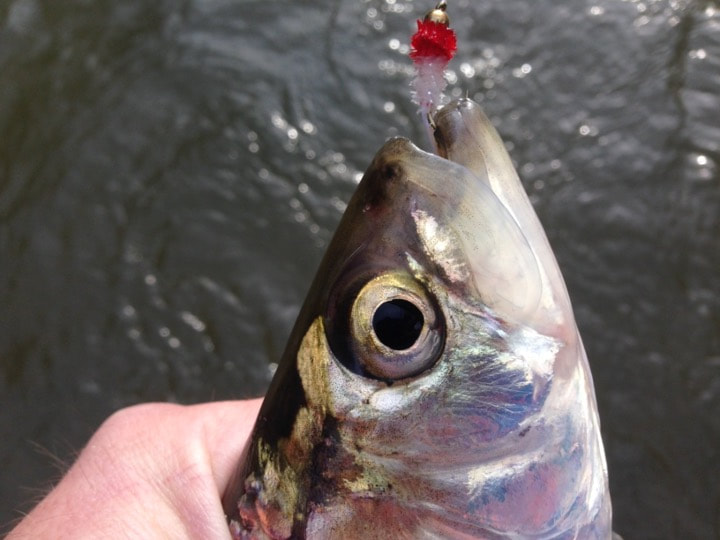


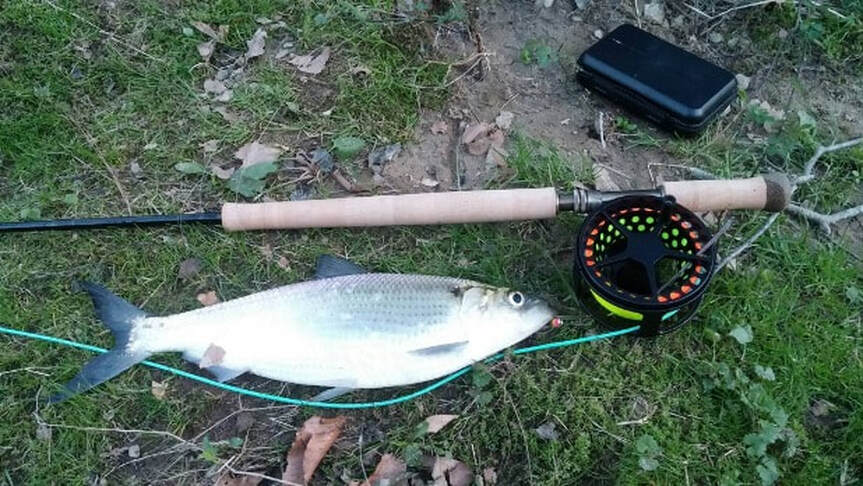

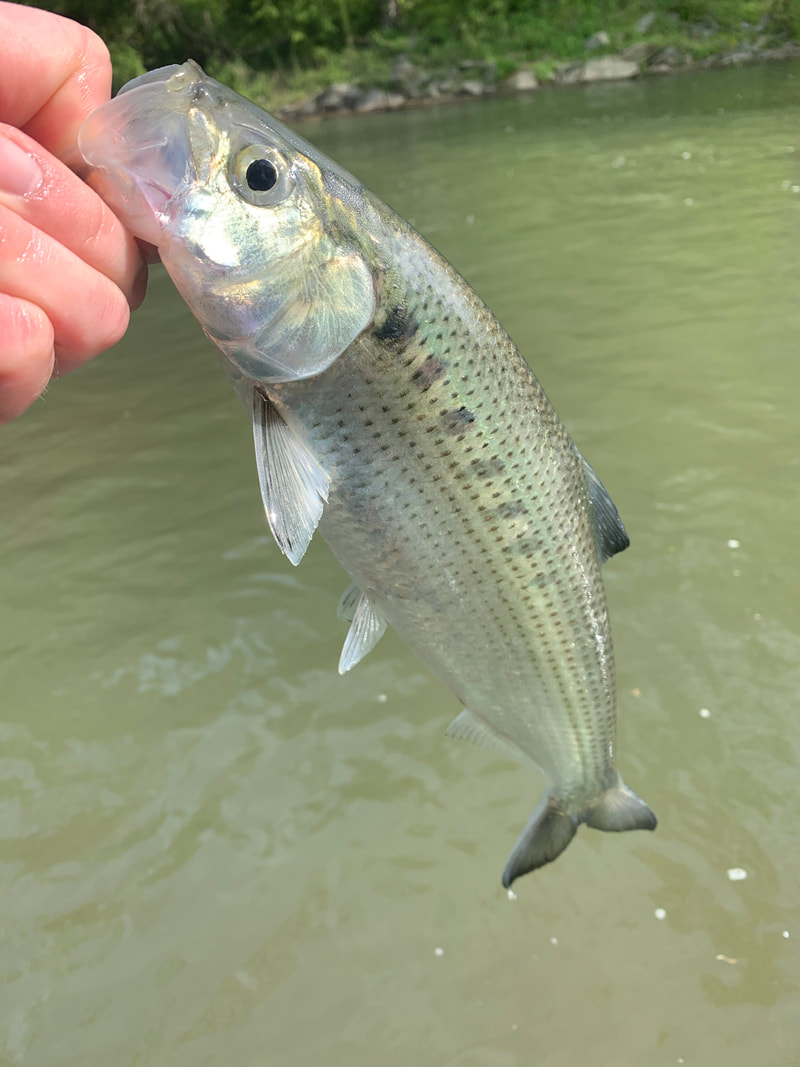







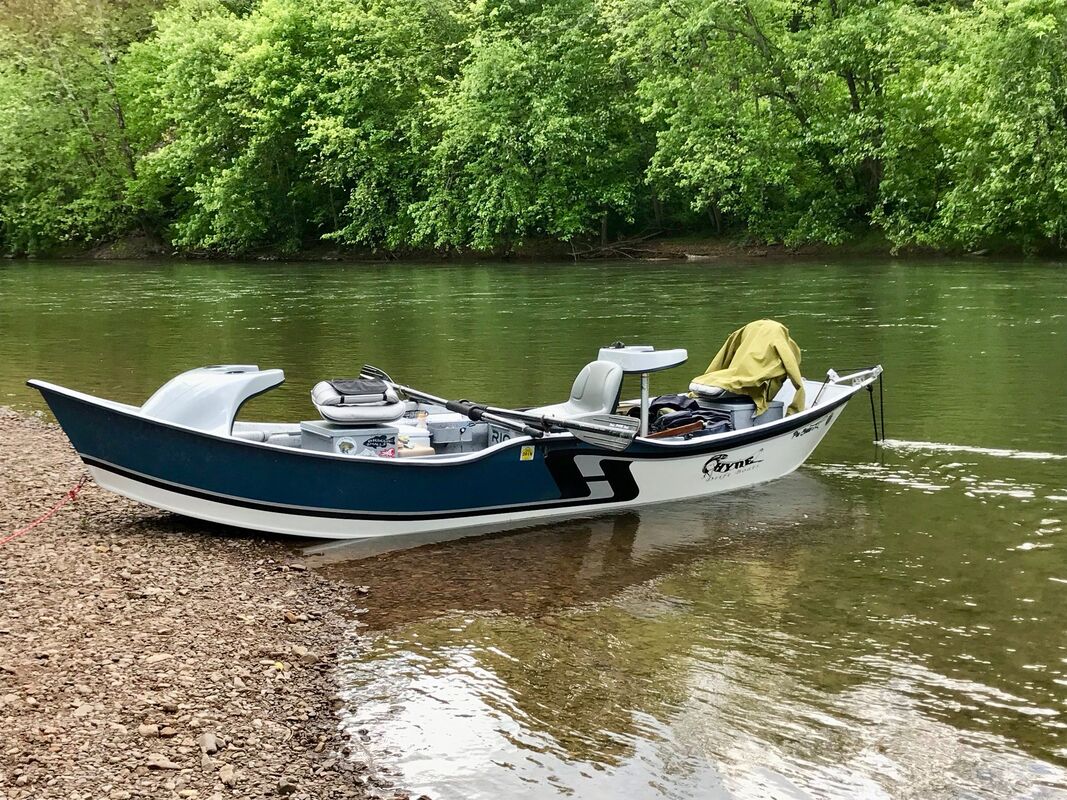




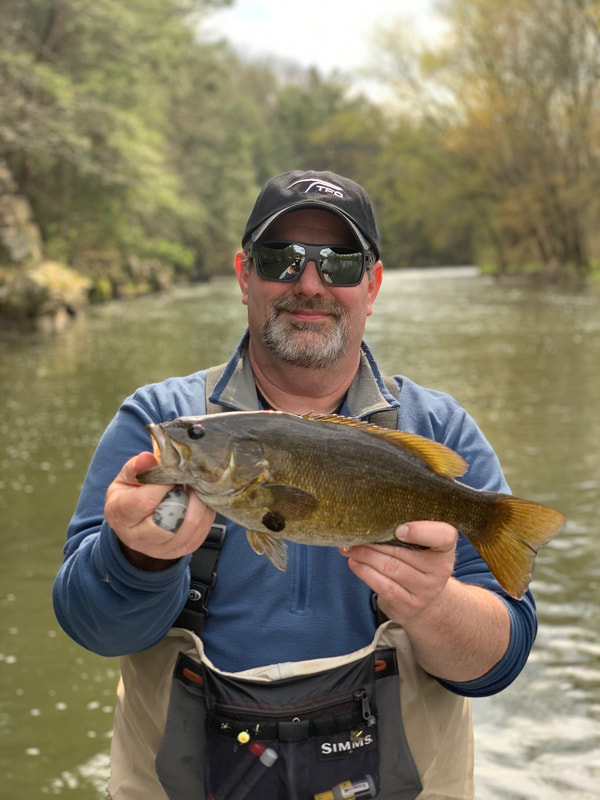

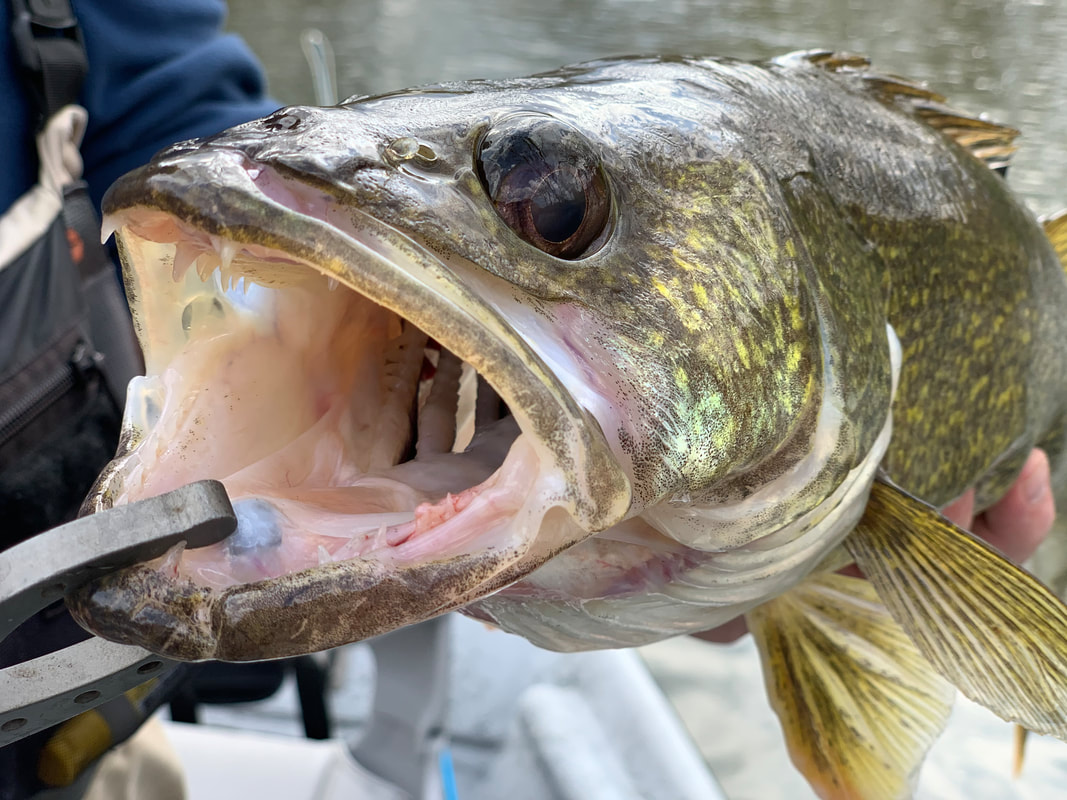














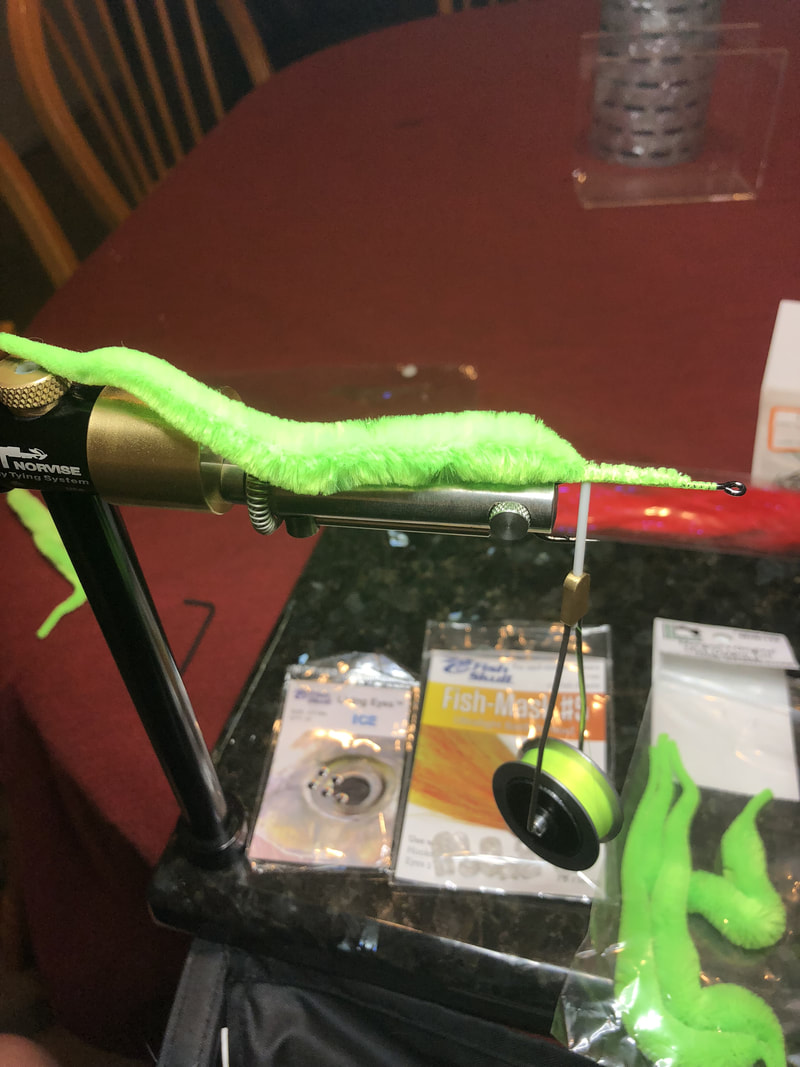
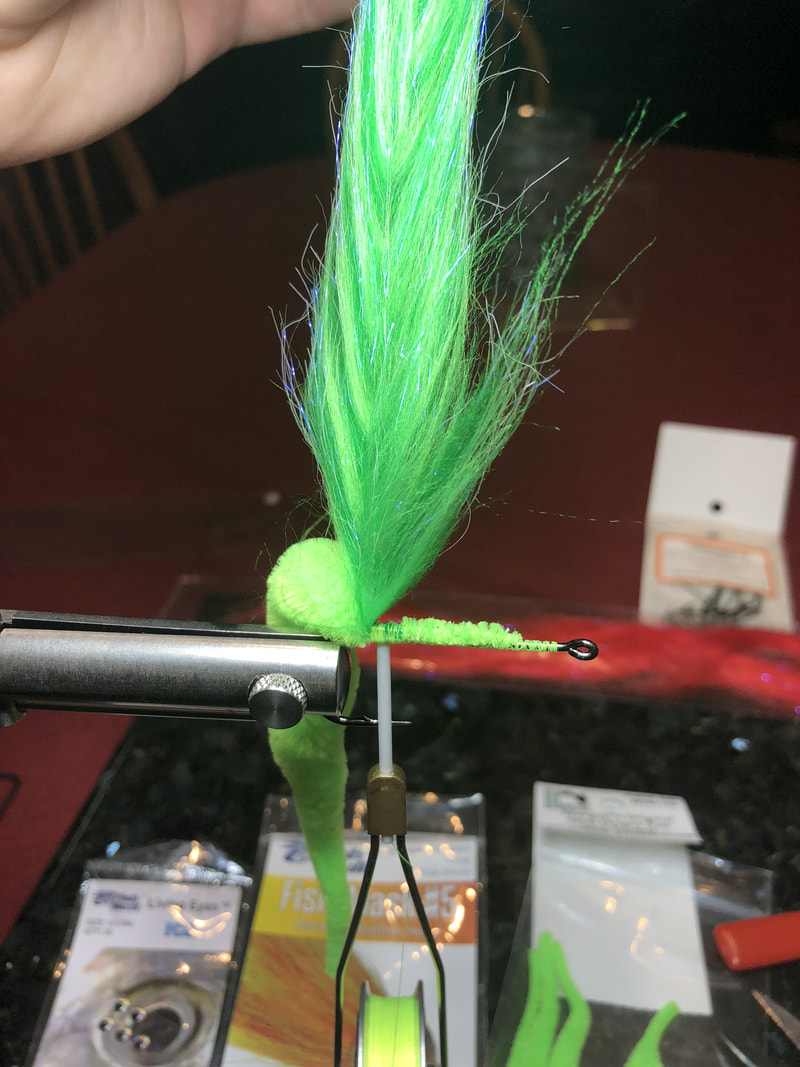

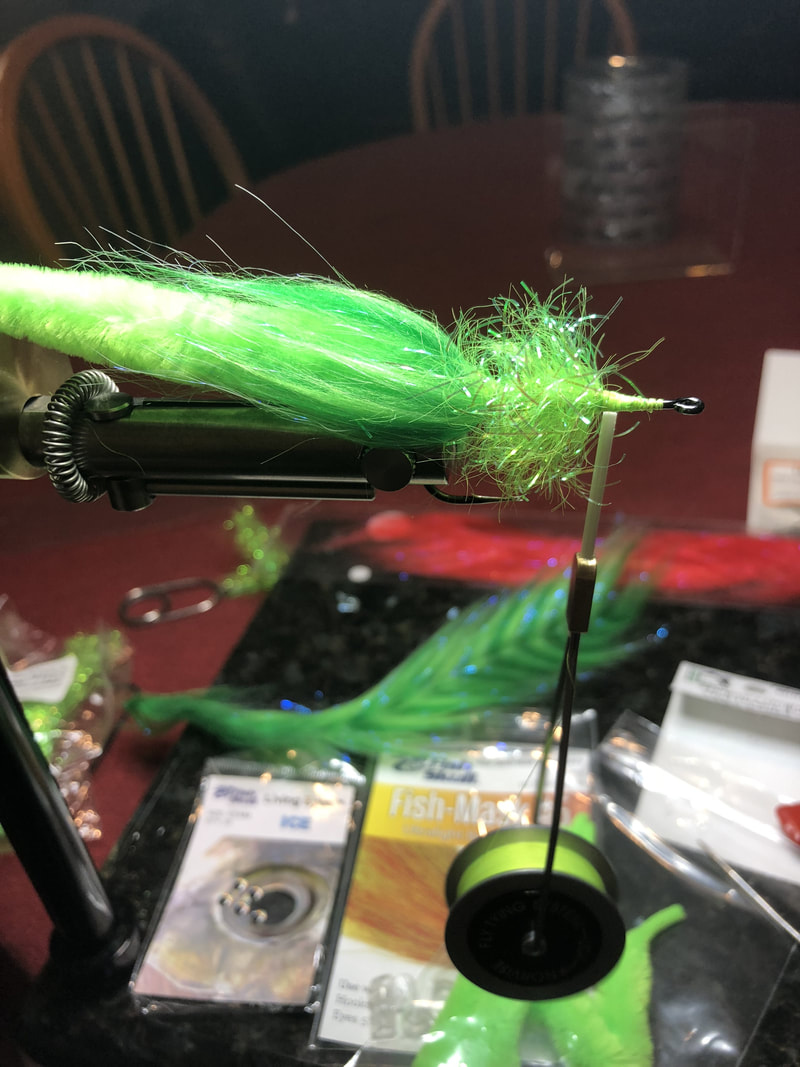
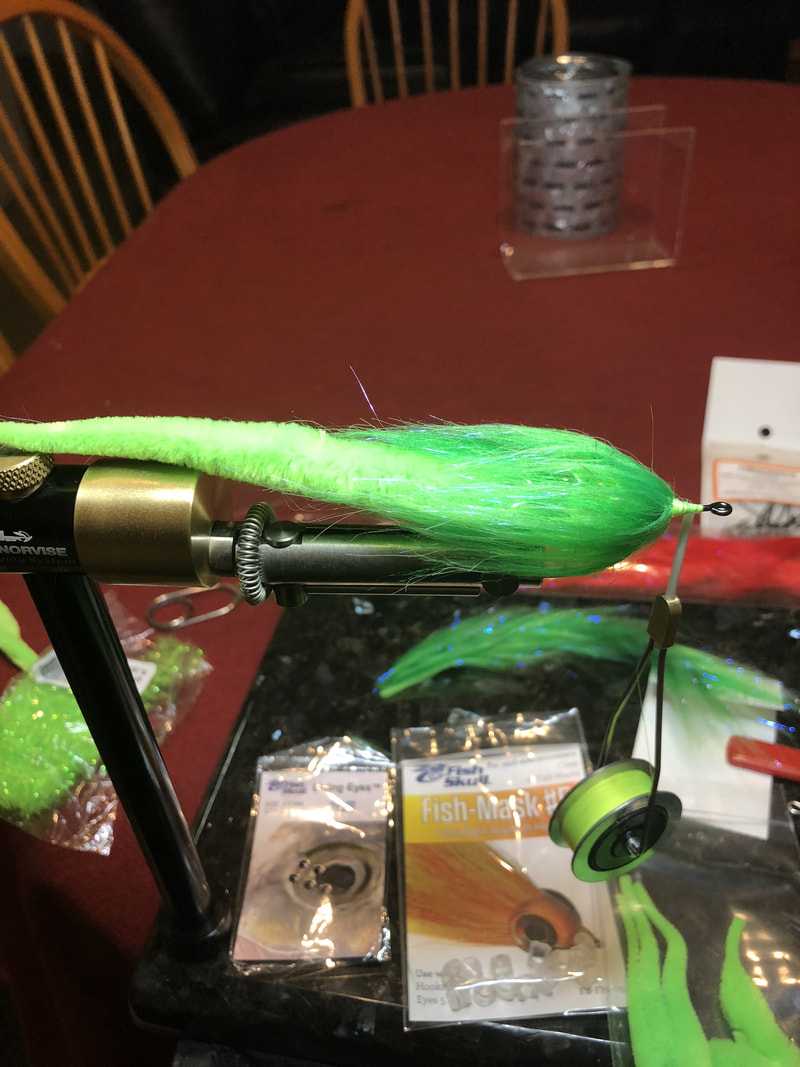





 RSS Feed
RSS Feed
